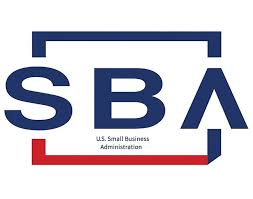SBA Clarifies Guidance on PPP, Issues Forgiveness Application

By Chasidy Rae Sisk
When Congress passed the CARES Act near the end of March, there was a lot of optimism about how the Paycheck Protection Program (PPP) and the Economic Injury Disaster Loan (EIDL) could benefit collision repair shops and other small businesses. Unfortunately, a lack of guidance on the forgivable portion of the PPP and a shortage of funds have since dimmed many people’s hopes. The SBA has responded by issuing clarification and additional guidance on the PPP program as well as an application for forgiveness that details the exact parameters that must be met to avoid repayment.
The SBA had originally vowed, on April 28, to audit all PPP borrowers receiving more than $2 million to certify that “current economic uncertainty makes this loan request necessary to support the ongoing operations of the applicant” after reports that companies had not applied in good faith, despite all borrowers being required to certify in good faith that the “current economic uncertainty makes this loan request necessary to support the ongoing operations of the Applicant… taking into account their current business activity and their ability to access other sources of liquidity sufficient to support their ongoing operations in a manner that is not significantly detrimental to the business.”
A new PPP FAQ passage added in mid-May announced that it would presume everyone who borrowed $2 million or less had done so in good faith: “Any borrower that, together with its affiliates, received PPP loans with an original principal amount of less than $2 million will be deemed to have made the required certification concerning the necessity of the loan request in good faith,” the government wrote.
“SBA has determined that this safe harbor is appropriate because borrowers with loans below this threshold are generally less likely to have had access to adequate sources of liquidity in the current economic environment than borrowers that obtained larger loans. This safe harbor will also promote economic certainty as PPP borrowers with more limited resources endeavor to retain and rehire employees. In addition, given the large volume of PPP loans, this approach will enable SBA to conserve its finite audit resources and focus its reviews on larger loans, where the compliance effort may yield higher returns,” the statement continued.
The following week, the SBA released the PPP loan forgiveness application which includes reminders of established rules as well as some new guidance on how loan forgiveness will be handled. According to the SBA’s May 15th press release:
The form and instructions include several measures to reduce compliance burdens and simplify the process for borrowers, including:
- Options for borrowers to calculate payroll costs using an “alternative payroll covered period” that aligns with borrowers’ regular payroll cycles
- Flexibility to include eligible payroll and non-payroll expenses paid or incurred during the eight-week period after receiving their PPP loan
- Step-by-step instructions on how to perform the calculations required by the CARES Act to confirm eligibility for loan forgiveness
- Borrower-friendly implementation of statutory exemptions from loan forgiveness reduction based on rehiring by June 30
- Addition of a new exemption from the loan forgiveness reduction for borrowers who have made a good-faith, written offer to rehire workers that was declined.
SBA’s release of the application is timely since the PPP process was opened on April 3, and employers who obtained the PPP loans early in the process are quickly approaching the eight-week covered period and may want to start working on the forgiveness process to avoid repaying the loan which carries a 1% interest rate and matures in two years. Collision repair shop owners should contact their accountant or qualified financial advisor to discuss the information and requirements of the form and ensure they are maximizing their forgiveness potential.
The PPP forgiveness application consists of a three-part calculation to determine the eligible portion of the loan. Borrowers must provide their payroll and qualifying non-payroll costs incurred over the eight-week period since receiving the PPP funds. Then, use the form to calculate the reduction in forgiveness amount if the number of employees or their pay was reduced, and finally, borrowers will complete the 75% payroll cost test since the forgiveness request must be comprised of at least 75% payroll costs.
While the application still leaves some questions unanswered, it does clarify how the SBA defines rent and utilities as it pertains to PPP forgiveness, plus it outlines what documentation is required with the forgiveness request. Required documentation includes reporting from bank accounts or third-party payroll services that documents the cash compensation paid to employees; payments receipts or account statements showing employer contributions to employee health insurance and retirement plans; and tax forms for the covered period, such as payroll forms, state quarterly wage and unemployment filings.
The SBA stated that it plans to release additional regulations and guidance soon. As of May 20, the SBA had approved over four million loans totaling more than $512 billion.
On May 15, the U.S. House of Representatives narrowly passed H.R. 6800, the Health and Economic Recovery Omnibus Emergency Solutions (HEROES) Act, by a 208 to 199 vote. The HEROES Act would provide an addition $3 trillion in tax cuts and spending in response to the COVID-19 pandemic’s negative health and financial impacts. The bill was sent to the Senate on May 20 but seems unlikely to garner their approval; however, experts are hopeful that some of the beneficial elements of the bill may survive in spinoff legislation.
The HEROES Act proposes an addition $10 billion in EIDL grants, and while it increases the length of time to spend PPP loans without relinquishing forgiveness opportunities, it also revises the 75% rule.
For more information on the PPP loans, visit: sba.gov/funding-programs/loans/coronavirus-relief-options/paycheck-protection-program.
PPP FAQs are available at: https://www.sba.gov/document/support–faq-lenders-borrowers
The PPP forgiveness application can be located at: https://www.sba.gov/sites/default/files/2020-05/3245-0407%20SBA%20Form%203508%20PPP%20Forgiveness%20Application.pdf
July 2020